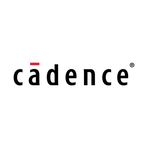The AI Revolution: Transforming Workspaces and Industries
June 11, 2025, 10:26 pm

Location: United States, California, San Jose
Employees: 5001-10000
Founded date: 1988
Artificial Intelligence (AI) is not just a buzzword; it’s a transformative force reshaping how businesses operate. In a world where cybersecurity threats loom large and hybrid work models become the norm, organizations are increasingly leaning on AI to bolster their defenses and streamline operations. The integration of AI into secure workspace solutions is a game changer, offering real-time intelligence and automation that enhance both security and efficiency.
Imagine a fortress. It stands tall, fortified against intruders. This is what AI does for secure workspaces. It acts as a vigilant guard, constantly scanning for threats that traditional methods might miss. In sectors like healthcare, finance, and legal, where sensitive data is the lifeblood, AI is proving indispensable. It provides smarter threat detection, intelligent access controls, and automated compliance reporting, ensuring that organizations can operate securely and efficiently.
The rise of hybrid work has created a new landscape. Employees are no longer confined to a single office. They work from various locations, using multiple devices. This flexibility, while beneficial, also increases vulnerability. AI-enhanced secure workspace platforms address these challenges head-on. They combine virtual desktops, zero-trust access, and endpoint protection, creating a robust environment that adapts to the needs of the modern workforce.
One of the standout features of AI in secure workspaces is advanced threat detection. Traditional security tools often rely on signature-based detection methods, which can leave gaps. AI, however, learns to recognize suspicious behavior patterns. It can identify anomalies, such as logins from unusual locations or access to sensitive files outside of normal hours. When these behaviors are detected, AI triggers alerts or automatic countermeasures, aligning perfectly with zero-trust frameworks that demand verification at every step.
This proactive approach is crucial in environments where sensitive data is at stake. It ensures that organizations can respond swiftly to potential threats, minimizing the risk of data breaches. The result? A fortified workspace that empowers employees while keeping data secure.
But AI doesn’t just protect; it also streamlines operations. The burden on IT departments is heavy, often bogged down by repetitive tasks. AI alleviates this strain by automating processes like patch deployment, security policy enforcement, and bandwidth allocation. This dynamic handling of tasks allows businesses to scale operations without the need for a proportional increase in IT staff. For modern Chief Information Officers (CIOs), this means enhanced operational efficiency and better cost control.
Imagine a well-oiled machine. Each part works in harmony, ensuring smooth operation. This is what AI brings to IT operations. It allows teams to focus on strategic initiatives rather than getting lost in the minutiae of daily tasks.
Another significant advantage of AI in secure workspaces is its ability to customize access through user behavior analytics. By monitoring user actions over time, AI learns individual patterns and makes intelligent decisions about access permissions. This reduces unnecessary permissions and introduces a new layer of security logic. Organizations can implement access controls that adapt to user roles and behaviors, strengthening compliance with regulations like HIPAA and ISO 27001. This is particularly valuable for distributed teams and contractors, where managing access can be a complex challenge.
Compliance is another area where AI shines. Regulatory audits require visibility and traceability—two aspects where AI excels. Secure workspace platforms equipped with AI can track session data, enforce real-time policies, and generate audit-ready reports. This automation significantly reduces the manual burden often associated with regulatory reporting. For firms in finance and healthcare, where compliance is non-negotiable, AI integration offers peace of mind and demonstrable accountability.
Beyond security and compliance, AI also drives productivity. Intelligent systems analyze usage trends, recommend tools, adjust cloud resources, and identify issues that may hinder performance. In a world where hybrid and remote work models are on the rise, the ability to deliver consistent performance is increasingly reliant on these AI-driven optimizations.
Consider AI as a coach. It observes, analyzes, and provides feedback to enhance performance. This collaborative approach ensures that teams remain in control while benefiting from AI’s insights.
Real-world applications of AI in secure workspaces are already making waves. A healthcare group utilizes AI for behavior analytics to secure patient data access. A financial services firm employs AI to detect payment anomalies, reducing fraud risk. A remote creative agency optimizes network traffic for critical design software. Each example highlights how AI is tailored to meet unique operational needs, adding agility without sacrificing control.
Looking ahead, the role of AI in secure workspaces is set to evolve further. As platforms integrate more predictive capabilities and context-aware controls, companies will benefit from environments that automatically align workspace settings with business goals. This shift from reactive to proactive management will redefine how organizations approach security and efficiency.
In conclusion, AI is not just a tool; it’s a catalyst for change. It transforms secure workspaces into dynamic environments that adapt to the needs of the modern workforce. As organizations continue to embrace AI, they will unlock new levels of security, efficiency, and productivity. The future is bright, and AI is leading the way.
Imagine a fortress. It stands tall, fortified against intruders. This is what AI does for secure workspaces. It acts as a vigilant guard, constantly scanning for threats that traditional methods might miss. In sectors like healthcare, finance, and legal, where sensitive data is the lifeblood, AI is proving indispensable. It provides smarter threat detection, intelligent access controls, and automated compliance reporting, ensuring that organizations can operate securely and efficiently.
The rise of hybrid work has created a new landscape. Employees are no longer confined to a single office. They work from various locations, using multiple devices. This flexibility, while beneficial, also increases vulnerability. AI-enhanced secure workspace platforms address these challenges head-on. They combine virtual desktops, zero-trust access, and endpoint protection, creating a robust environment that adapts to the needs of the modern workforce.
One of the standout features of AI in secure workspaces is advanced threat detection. Traditional security tools often rely on signature-based detection methods, which can leave gaps. AI, however, learns to recognize suspicious behavior patterns. It can identify anomalies, such as logins from unusual locations or access to sensitive files outside of normal hours. When these behaviors are detected, AI triggers alerts or automatic countermeasures, aligning perfectly with zero-trust frameworks that demand verification at every step.
This proactive approach is crucial in environments where sensitive data is at stake. It ensures that organizations can respond swiftly to potential threats, minimizing the risk of data breaches. The result? A fortified workspace that empowers employees while keeping data secure.
But AI doesn’t just protect; it also streamlines operations. The burden on IT departments is heavy, often bogged down by repetitive tasks. AI alleviates this strain by automating processes like patch deployment, security policy enforcement, and bandwidth allocation. This dynamic handling of tasks allows businesses to scale operations without the need for a proportional increase in IT staff. For modern Chief Information Officers (CIOs), this means enhanced operational efficiency and better cost control.
Imagine a well-oiled machine. Each part works in harmony, ensuring smooth operation. This is what AI brings to IT operations. It allows teams to focus on strategic initiatives rather than getting lost in the minutiae of daily tasks.
Another significant advantage of AI in secure workspaces is its ability to customize access through user behavior analytics. By monitoring user actions over time, AI learns individual patterns and makes intelligent decisions about access permissions. This reduces unnecessary permissions and introduces a new layer of security logic. Organizations can implement access controls that adapt to user roles and behaviors, strengthening compliance with regulations like HIPAA and ISO 27001. This is particularly valuable for distributed teams and contractors, where managing access can be a complex challenge.
Compliance is another area where AI shines. Regulatory audits require visibility and traceability—two aspects where AI excels. Secure workspace platforms equipped with AI can track session data, enforce real-time policies, and generate audit-ready reports. This automation significantly reduces the manual burden often associated with regulatory reporting. For firms in finance and healthcare, where compliance is non-negotiable, AI integration offers peace of mind and demonstrable accountability.
Beyond security and compliance, AI also drives productivity. Intelligent systems analyze usage trends, recommend tools, adjust cloud resources, and identify issues that may hinder performance. In a world where hybrid and remote work models are on the rise, the ability to deliver consistent performance is increasingly reliant on these AI-driven optimizations.
Consider AI as a coach. It observes, analyzes, and provides feedback to enhance performance. This collaborative approach ensures that teams remain in control while benefiting from AI’s insights.
Real-world applications of AI in secure workspaces are already making waves. A healthcare group utilizes AI for behavior analytics to secure patient data access. A financial services firm employs AI to detect payment anomalies, reducing fraud risk. A remote creative agency optimizes network traffic for critical design software. Each example highlights how AI is tailored to meet unique operational needs, adding agility without sacrificing control.
Looking ahead, the role of AI in secure workspaces is set to evolve further. As platforms integrate more predictive capabilities and context-aware controls, companies will benefit from environments that automatically align workspace settings with business goals. This shift from reactive to proactive management will redefine how organizations approach security and efficiency.
In conclusion, AI is not just a tool; it’s a catalyst for change. It transforms secure workspaces into dynamic environments that adapt to the needs of the modern workforce. As organizations continue to embrace AI, they will unlock new levels of security, efficiency, and productivity. The future is bright, and AI is leading the way.
